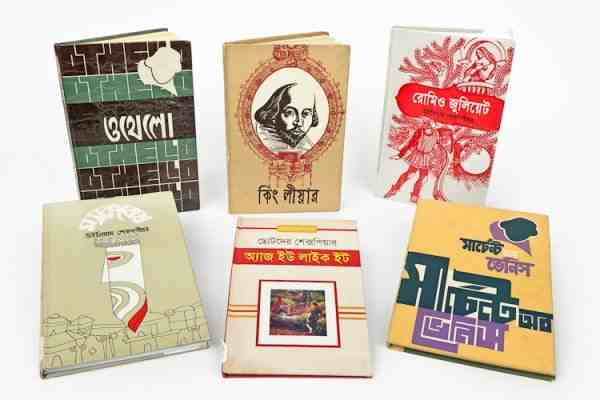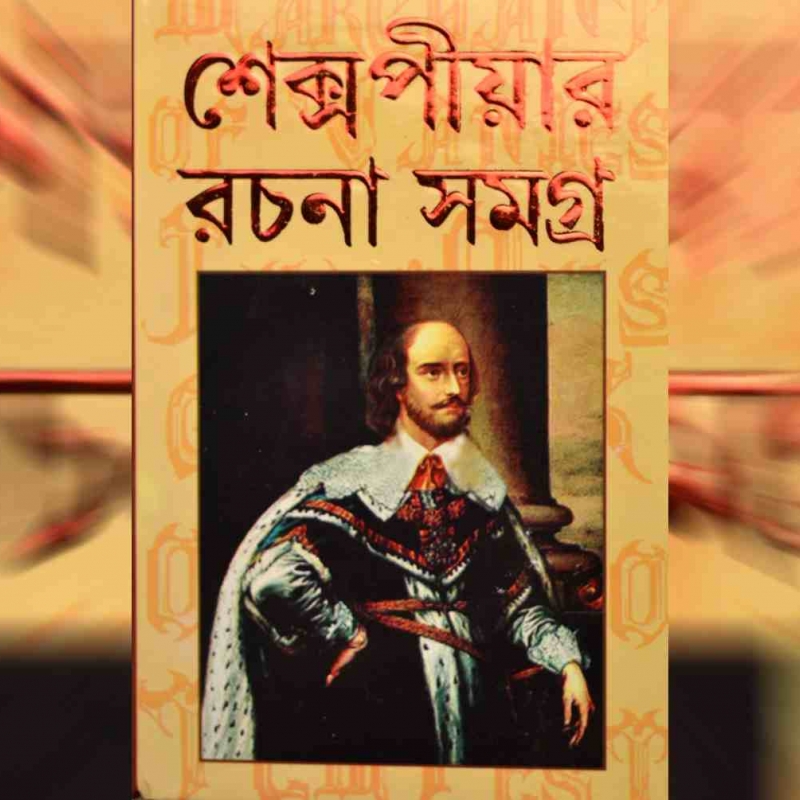Bengalis are known to quote Shakespeare as much as they do Tagore or Marx. But when did the words and ideas of the bard take hold of the Bengali intelligentsia? We explore three ways in which Shakespeare’s dramas made an indelible impact on the Bengali mind, starting in nineteenth-century Bengal. (Photo courtesy: Amazon)
If the works of the poet Virgil could be said to have introduced the flavour of classical literature into medieval Europe, Shakespearean drama performed the same functions in familiarising the new Western educated intelligentsia of nineteenth-century India[1] to the rich literary world of early modern Europe. In the case of Bengal, this exposure to a non-Sanskritic and hitherto unknown literary world was to be an integral part of the movement generally described as the Bengal Renaissance.
However, this argument also needs to be qualified in certain respects. Within the framework of intellectual exchanges between Europeans and Indians in the early colonial period, a conscious engagement with European literature was conspicuous by its absence. Indian banias (traders), dobashis (those who spoke the Indo-European Bengali dialect) and other middlemen who regularly interacted with Englishmen had little use for this and strangely, even missionaries or East India Company employees in early colonial Calcutta made no investments in promoting an interest in English literature. Several prominent Hindu-Bengali travellers to England in the nineteenth century beginning with Rammohun Roy in 1830, down to Bipin Chandra Pal in 1899 show a reluctance to discuss matters literary, and their observations on contemporary English life, though otherwise informative, remains bereft of references to English literature. When in England, Roy lived for a while in Bristol, not far from Stratford upon Avon, which, however, he never visited. Roy profusely quoted from John Locke and Francis Bacon, to the exclusion of all notable English poets and dramatists.
Shakespeare as Education
The impact made by Shakespearean literature on the Hindu mind in Bengal was felt in three related ways: through teaching Shakespeare to school and college students, the staging of Shakespearean plays on the European and Indian theatres, and the growth of formal Shakespearean studies. A zealous and sustained interest in English literature courses commenced only with the founding of the Hindu College in 1817, even though Mary and Charles Lamb’s Tales from Shakespeare (1807) may have been introduced into some local schools.
Also read | The Extraordinary Life and Work of Akshay Kumar Dutta
Indian poet H.L.V. Derozio, who later taught Shakespeare at Hindu College, had himself been introduced to these plays when he was a student at Drummond’s Academy in Dharmatala. However, the man most famed for popularising Shakespeare in early colonial Calcutta was David Lester Richardson (1801–65); it is with his evocative elocution that Macaulay was particularly enchanted. Richardson also actively encouraged his students to stage Shakespearean plays. The Merchant of Venice was staged by his students in 1837. A local paper, Bengal Harakaru (of 19.8.1948), had the following to say of one Bostom Churn Addy who played the part of Othello in 1848: ‘His delivery was somewhat cramped but under all circumstances, his pronunciation of English was for a native, remarkably good.’[2] By the early 1850s, the students of the Hare School, the Metropolitan Academy, and Oriental Academy also joined in this enterprise. The man who made Shakespeare studies popular in Calcutta was Hugh Melville Percival, an Anglo-Indian by birth, who was briefly the principal of Hindu (then Presidency) College in 1909. By 1911, when he retired from service, Percival had produced several critical editions of Shakespearean plays for the use of Indian students.

In Translation and Adaptation
However, adaptations and translations of Shakespearean plays was a relatively more productive enterprise in mid-nineteenth century Calcutta. Among the earliest to be so translated were Bhanumatir Chittavilas (Merchant of Venice) in 1853 and Charumukh Chitrahara Natak (Romeo and Juliet) in 1864. The educationist, Vidyasagar, produced a prose translation of Comedy of Errors (Bhrantivilas) in 1869. One Haranchandra Rakshit (1864–1926) published about 12 Shakespearean plays in translation between 1896 and 1903. The well-known Bengali actor and playwright Girshchandra Ghosh translated and staged Macbeth in 1897.
Also read | Recovering Raja Rammohun Roy
Judging by the titles given to these translations or adaptations it would have to be said that these entailed a deliberate Indianisation of characters and changes to the original storyline. What emerges as particularly interesting though is the Calcutta intelligentsia’s drawing points of comparison between Shakespearean and Sanskrit dramatic traditions. In a paper titled Sanksrit Bhasha O Sanksrit Sahitya Bishayak Prastab (1853), Ishwarchandra Vidyasagar observed how Sanskrit literature did not quite take stock of the startling polarities of human experience. It rejoiced in the visual delight of watching objects of beauty but failed to detect the power and the beauty that also lay hidden even within the apparently demoniac and the terrible. Sometime in August 1860, the poet Michael Madhusudan Dutta, writing to the accomplished actor of the Bengali stage, Keshabchandra Gangopadhayay, also drew attention to differences in dramatic treatment: ' . . . in the great European drama’, he remarked, ‘you have the stern realities of life, lofty passion and heroism and sentiment; with us it is all softness and romance. We forget the world of reality and dream of Fairylands’.
Dutta resented the negative comparisons sometimes made between his own dramatic productions and those of Shakespeare: ‘We are no doubt actuated by the same passions but in us, those passions assume a milder shape’, he warned his detractors. But perhaps the most insightful commentary came from the novelist Bankimchandra Chattopadhyay in an essay published in 1873. Comparing Kalidas’s character Shakuntala with two female characters drawn from Shakespeare (Miranda from Tempest and Desdemona from Othello), Chattopadhyay noted how whereas Shakespearean dramatic plots had the vastness, variety, depth and turbulence of the ocean, the Kalidas’s plays were best likened to placid and picturesque gardens which had beauty to boast of but not the skills to instructively present the range of changing human emotions.[3]
Arguably, Sanskrit literature could not have produced the tragic tear of Antigone or Acharnians.
Could it be, then, that the Hindu’s sense of tragedy preferred to manifest itself in not dramatic realism but metaphysical speculation?
This article was also published on South Asia Monitor.
Notes
[1] This essay is based on the following: R.K Dasgupta, ‘Shakespeare in Bengali Literature’ Indian Literature', 7,1, (1964), a heavily plagiarised paper by Arghya Chakrabarty titled ‘Reshaping Canon: William Shakespeare and the Bengali Theatre of 19th century Calcutta’ in Journal of Emerging Technologies and Innovative Research, 6,5, May 2019, and Hema Dahiya, Essays on Shakespeare. Essays and Contexts (2018).
[2] Othello also entered the Bengali cinema in a big way with the film Saptapadi (1961) and remains a part of commonplace Bengali cultural memory.
[3] Bankimchandra Chattopadhyay: Sakuntala, Miranda o Desdemona (1873)













